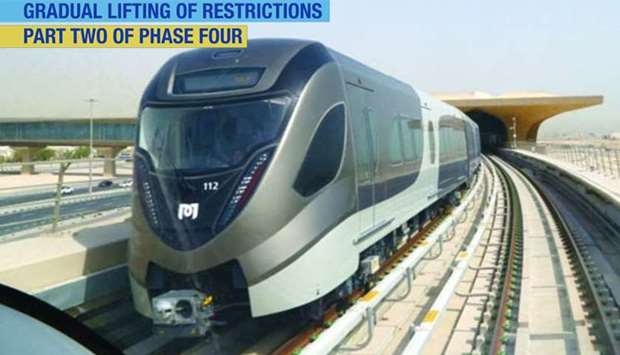The Government Communications Office (GCO) has reiterated that adherence to the precautionary measures remain essential as the Qatar commences the second part of Phase 4 the gradual lifting of Covid-19 restrictions.
"The situation will continue to be assessed, with the reintroduction or lifting of some restrictions dependent on developments," the GCO said in a tweet on Wednesday.
Part 2 of the fourth phase got under way on September 15, as announced by the Supreme Committee for Crisis Management.
The GCO on Wednesday issued an infographic highlighting the key aspects of this phase of the lifting of restrictions. These are as follows:
1. Gatherings
* Gatherings of 15 people indoors and 30 people outdoors
* Weddings with a maximum of 40 people indoors and 80 people outdoors
* All mosques open to perform daily and Friday prayers
2. Business and leisure
* 80% of employees allowed in public and private workplaces
* Souqs to operate at 75% of capacity
* Wholesale markets to operate at 50% of capacity
* Cleaning and hospitality services in workplaces at 30% of capacity, and resumption of home services
* Local exhibitions allowed at 30% of capacity
* Malls to operate at 50% of capacity, with normal hours and children allowed
* Food courts in malls to operate at 30% of capacity
* Restaurants to operate at 30% of capacity; playgrounds and leisure centres remain closed
* Massage and sauna centres to operate at 30% of capacity
* Cinemas and theatres to operate at 30% of capacity for those aged 18 years and above
* Museums and libraries to operate at full capacity
* Continuing the suspension of home beauty, barber, massage and fitness training services
3. Transport
* Personal boat and yacht rentals at 30% of capacity
* Doha Metro and buses to operate at 30% of capacity
* Driving schools to operate at 50% of capacity
* Continuing to follow Qatar's travel policy
4. Professional sports and personal fitness
* Spectators at 20% of capacity indoors and 30% outdoors
* Health clubs, gyms and pools to operate at 30% of capacity
* Continuing the closure of playgrounds and sports equipment in public parks
5. Education and health
* Private healthcare facilities to operate at 100% capacity
* Private education and training centres to operate at 50% of capacity

